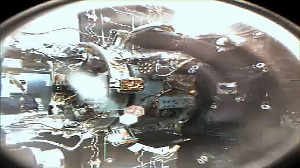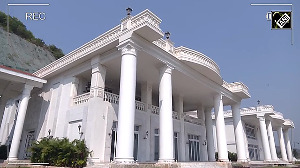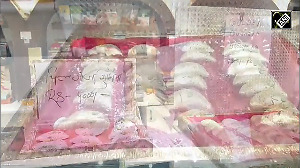 At least 19 people, mostly Asian and European tourists, were killed on Tuesday in one of the deadliest hot air balloon accidents in history as the fun ride ended on a tragic note near the ancient Egyptian temple city of Luxor.
At least 19 people, mostly Asian and European tourists, were killed on Tuesday in one of the deadliest hot air balloon accidents in history as the fun ride ended on a tragic note near the ancient Egyptian temple city of Luxor.
The balloon was at 1,000 ft (300 metres) when it caught fire and exploded, plunging onto sugarcane fields west of Luxor, officials said. The hot air balloon carrying 21 people caught fire mid-air before crashing to the ground, General Mamdough Khaled, director of security for Luxor governate said in a statement.
Passengers in the balloon included 19 foreign tourists, from Hong Kong, France, Japan and Britain. An Egyptian pilot and another Egyptian were also on board, Luxor province spokesman Badawi al-Masri said.
LuxorInternationalHospital received 19 badly burned bodies, Khaled said. At least two people, including the balloon's pilot, survived, reportedly by jumping out of the balloon before it crashed.
Security services cordoned off crash site as police inspected the charred remains of the balloon. The public prosecutor has begun a probe into the crash.
Media reports said that the preliminary investigation showed that the balloon was about to land and actually did throw out the anchor.
The accident occurred when the anchor's rope cut the tube of helium and caught fire. The balloon was once again raised by air currents before it exploded. The explosion caused the bodies to char and disperse over a wide area of agricultural land, according to reports.
The balloon was operated by a company named Sky Cruise, state-run MENA news agency reported. British tour operator Thomas Cook confirmed that four of its clients were on board the balloon, two had died and two were in hospital.
"We have a very experienced team in resort with the two guests in the local hospital, and we're providing our full support to the family and friends of the deceased at this difficult time," Peter Fankhauser, CEO of Thomas Cook United Kingdom and Europe, said.
The Chinese embassy in Egypt has confirmed that nine Hong Kong tourists died in the balloon crash. Egyptian police have said the other tourists include four from Japan and two from France. At least one Egyptian also died.
The balloon had been floating over the west bank of Luxor, which lies on the banks of the river Nile and is home to some of Egypt's most famous pharaonic-era ruins.
The governor of Luxor has suspended hot air balloon activities in the governorate after the accident. Balloon rides offering scenic aerial views of the NileRiver and the ancient temples of Karnak and Hatshepsut are a popular tourist attraction in Luxor, about nine hours' drive southeast of Cairo.
The catastrophe may be the deadliest hot air balloon accident in history. In 1989, 13 people were killed when two hot air balloons collided in Australia.
In 2009, 13 foreign tourists were injured when their hot air balloon hit a phone mast and crashed at Luxor. US photographer Christopher Michel was in another balloon, taking some aerial shots, at the time.
"We flew over the ancient ruins. Just before landing in the cornfields, I heard an explosion and saw smoke. I think it was the balloon behind mine," he was quoted by the BBC as saying.
"I wasn't sure what had happened at first. It was only when we landed we heard the full extent of what happened," he said. The crisis comes in the wake of Egypt's tourism sector suffering with the country taken off the international tourism map for the lack of security. Tourism used to contribute 12 per cent to the GDP annually and was the second source for foreign currency.
Mahfouz Ali, undersecretary at the Egyptian ministry of tourism has said that the ministry has formed a committee to follow the developments of the accident and stay in contact with the security and health authorities. In addition, he said that the ministry is in contact with the necessary embassies.
Picture: Police and rescue officials lift the bodies of tourists who died after a hot air balloon crashed in Luxor.
Photographer: Stringer/Reuters









 © 2025
© 2025